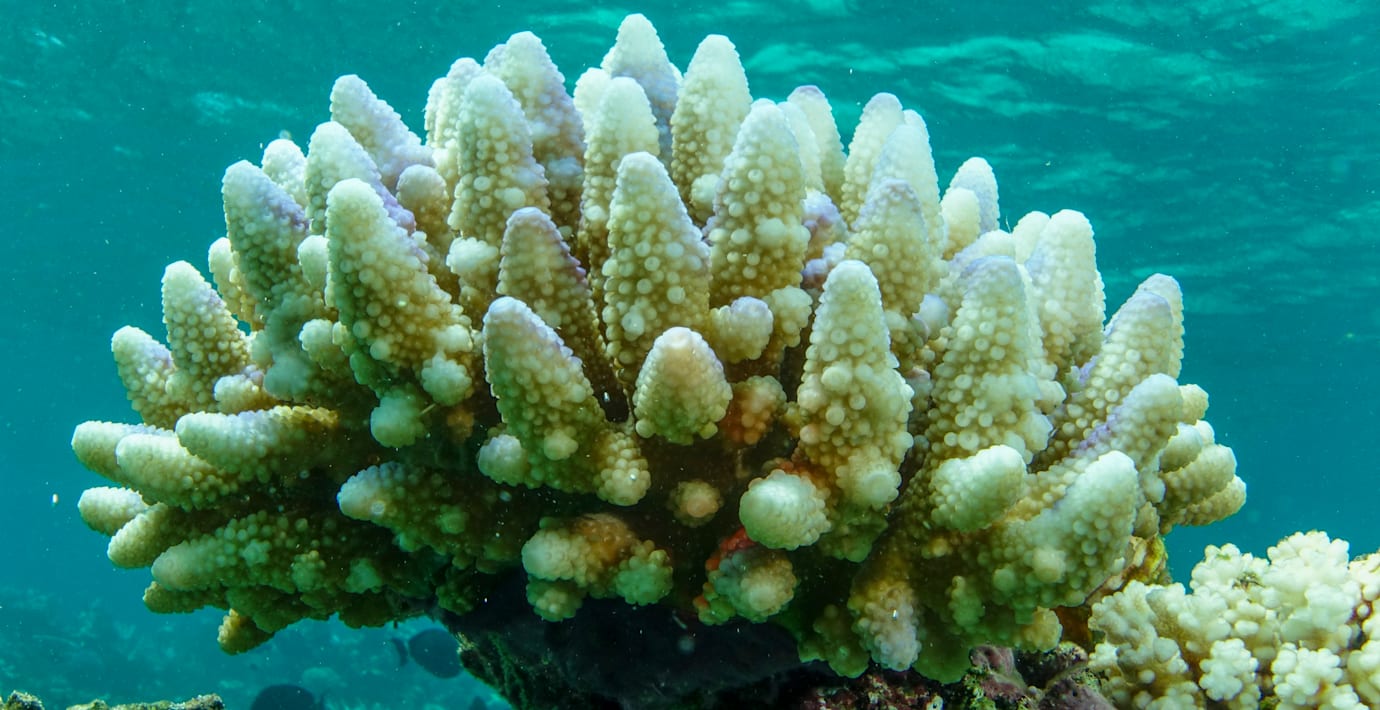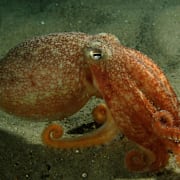Wikipedia (en)
Coral bleaching is the process when corals become white due to various stressors, such as changes in temperature, light, or nutrients. Bleaching occurs when coral polyps expel the algae (zooxanthellae) that live inside their tissue, causing the coral to turn white. The zooxanthellae are photosynthetic, and as the water temperature rises, they begin to produce reactive oxygen species. This is toxic to the coral, so the coral expels the zooxanthellae. Since the zooxanthellae produce the majority of coral pigmentation, the coral tissue becomes transparent, revealing the coral skeleton made of calcium carbonate. Most bleached corals appear bright white, but some are pastel blue, yellow, or pink due to proteins in the coral.Bleached corals continue to live, but they are more vulnerable to disease and starvation. Zooxanthellae provide up to 90 percent of the coral's energy, so corals are deprived of nutrients when zooxanthellae are expelled. Some corals recover if conditions return to normal, and some corals can feed themselves. However, the majority of coral without zooxanthellae starve.Normally, coral polyps live in an endosymbiotic relationship with zooxanthellae. This relationship is crucial for the health of the coral and the reef, which provide shelter for approximately 25% of all marine life. In this relationship, the coral provides the zooxanthellae with shelter. In return, the zooxanthellae provide compounds that give energy to the coral through photosynthesis. This relationship has allowed coral to survive for at least 210 million years in nutrient-poor environments. Coral bleaching is caused by the breakdown of this relationship.The leading cause of coral bleaching is rising water temperature. A temperature about 1 °C (or 2 °F) above average can cause bleaching. According to the United Nations Environment Programme, between 2014 and 2016, the longest recorded global bleaching events killed coral on an unprecedented scale. In 2016, bleaching of coral on the Great Barrier Reef killed between 29 and 50 percent of the reef's coral. In 2017, the bleaching extended into the central region of the reef. The average interval between bleaching events has halved between 1980 and 2016. The world's most bleaching tolerant corals can be found in the southern Persian/Arabian Gulf. Some of these corals bleach only when water temperatures exceed ~35 °C.




